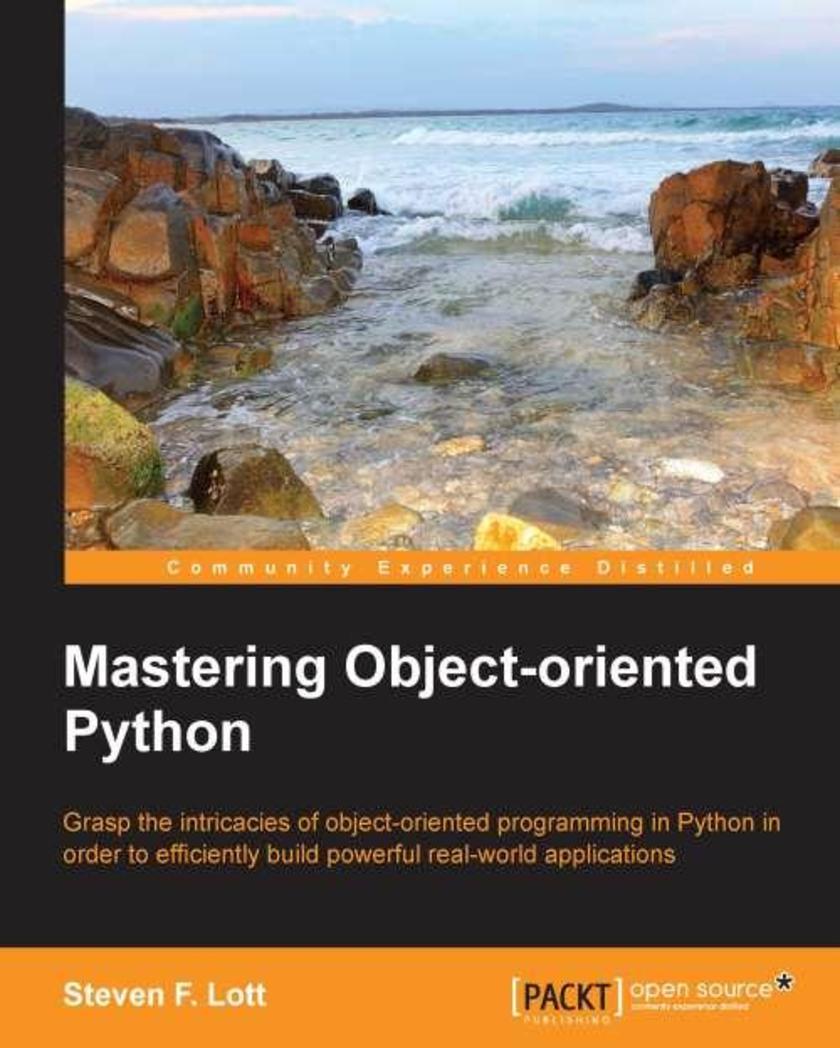
Mastering Object Oriented Python
¥80.65
This book follows a standard tutorial approach with approximately 750 code samples spread through the 19 chapters. This amounts to over 5,900 lines of code that illustrate each concept. This book is aimed at programmers who have already learned the basics of objectoriented Python and need to write more sophisticated, flexible code that integrates seamlessly with the rest of Python. This book assumes a computer science background, with experience of common Python design patterns.
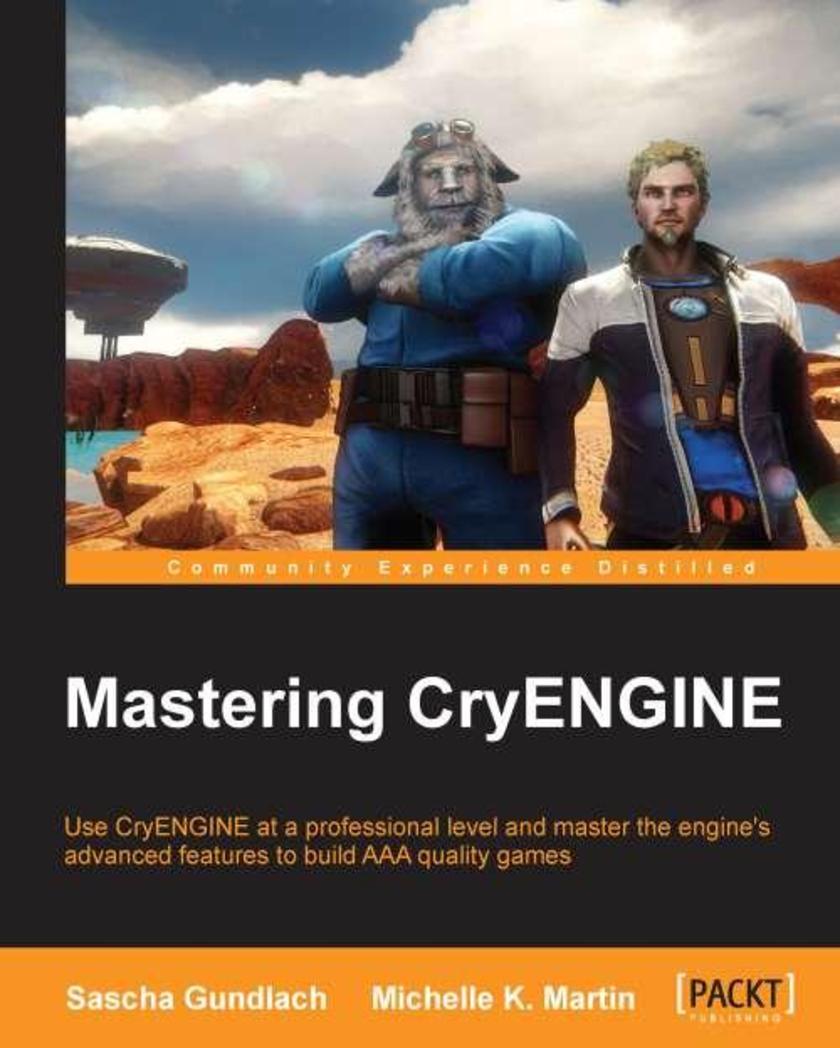
Mastering CryEngine
¥90.46
A comprehensive guide that covers advanced tasks performed with the CryENGINE system using interesting examples and illustrations demonstrating each of its features. This book is designed for developers who already have a basic understanding of CryENGINE and who want to take their skills to the next level. Whether you are a hobbyist developer or you are working on an AAA project, Mastering CryENGINE will help you enhance your CryENGINE proficiency.
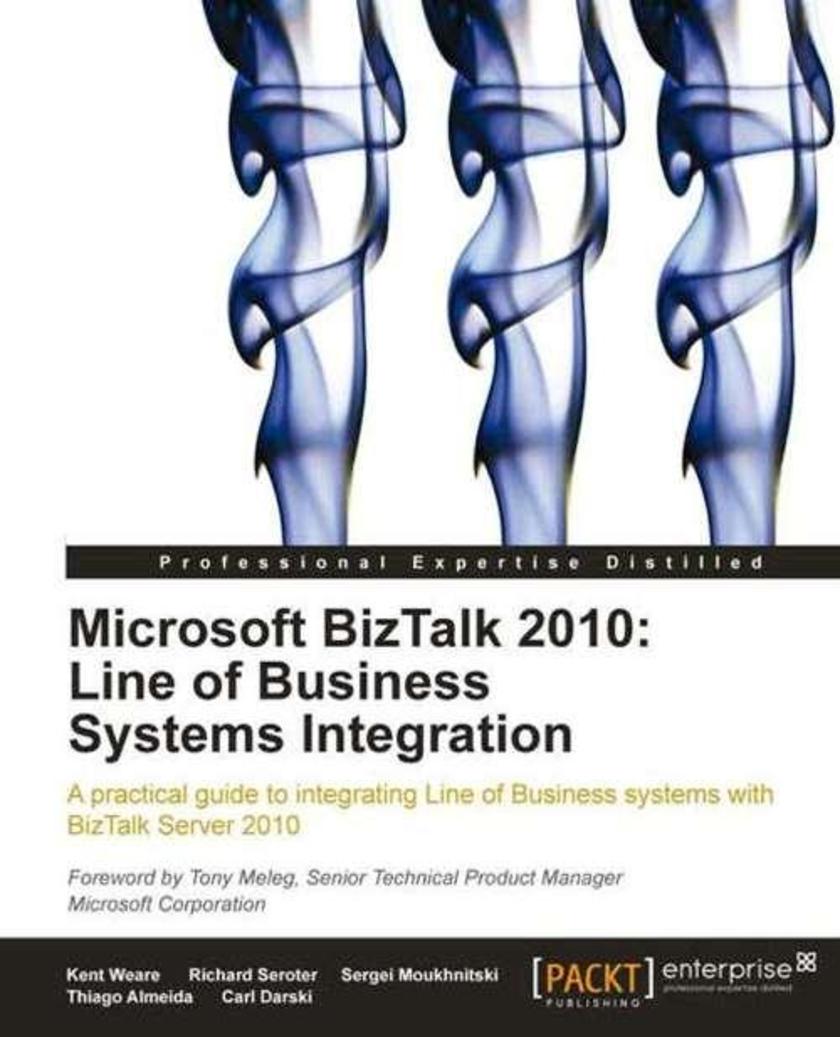
Microsoft BizTalk 2010: Line of Business Systems Integration
¥107.90
This book focuses on Microsoft BizTalk 2010; however, most of the concepts and explanations will apply to BizTalk 2006 R2 and BizTalk 2009. If you are an experienced BizTalk developer who wants to integrate BizTalk with Line of Business systems using practical scenarios, then this book is for you. A solid understanding of BizTalk at an intermediate level is required. This book assumes developers are comfortable creating schemas, maps, orchestrations, ports and messages in Visual Studio and configuring applications in the BizTalk Administration Console. However, experience in integrating with Line of Business systems is not necessarily required.

Sakai CLE Courseware Management
¥99.18
This book takes a step-by-step, practical approach and is filled with examples and illustrations. This book is written for a wide audience that includes teachers, system administrators, and first time developers. It also appeals to the Sakai open source community, potential community members, and decision makers working in education.

Oracle PeopleSoft Enterprise Financial Management 9.1 Implementation
¥99.18
This step-by-step tutorial will take you through Oracle PeopleSoft Financial Management 9.1 and show you how to implement it into your business. It is written in an easy-to-read style, with a strong emphasis on real-world, practical examples with step-by-step explanations. This book will establish a solid foundation for your efforts to become a successful PeopleSoft Financials practitioner. If you are a functional implementation analyst, a business analyst, or a business user who plans to start using PeopleSoft applications, this book is for you. Reading this book will equip you with the basic skills to configure and maintain PeopleSoft financial applications.
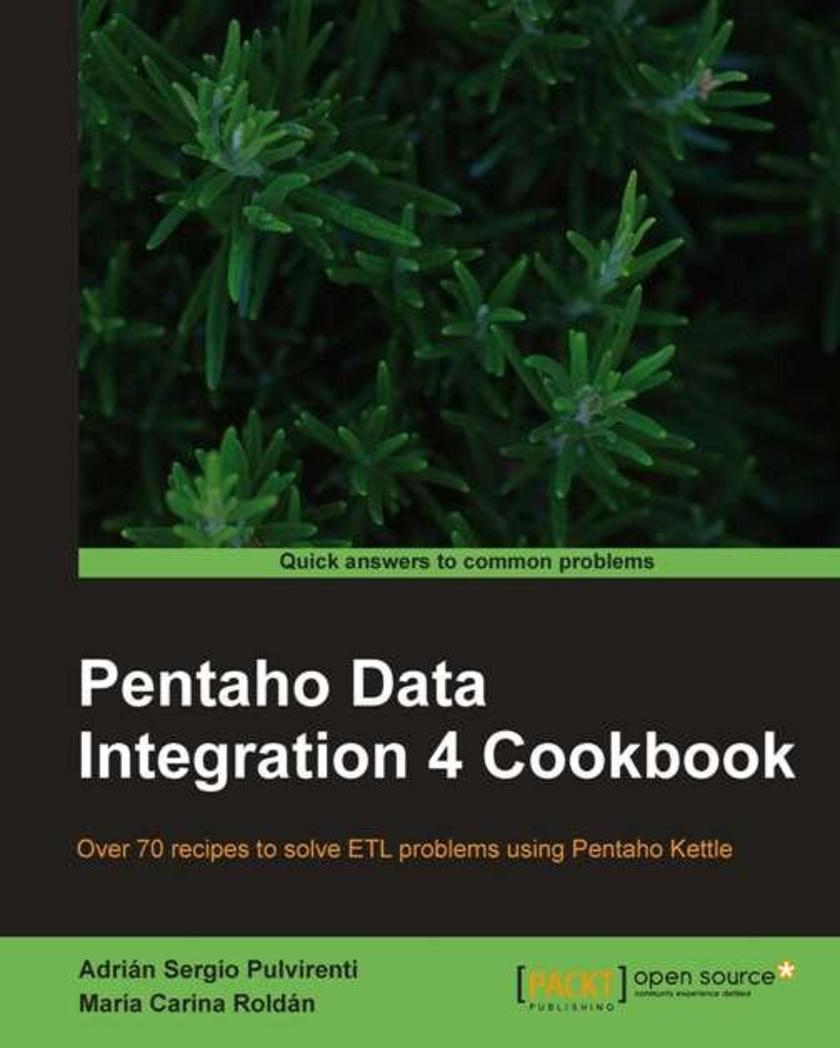
Pentaho Data Integration 4 Cookbook
¥80.65
This book has step-by-step instructions to solve data manipulation problems using PDI in the form of recipes. It has plenty of well-organized tips, screenshots, tables, and examples to aid quick and easy understanding. If you are a software developer or anyone involved or interested in developing ETL solutions, or in general, doing any kind of data manipulation, this book is for you. It does not cover PDI basics, SQL basics, or database concepts. You are expected to have a basic understanding of the PDI tool, SQL language, and databases.
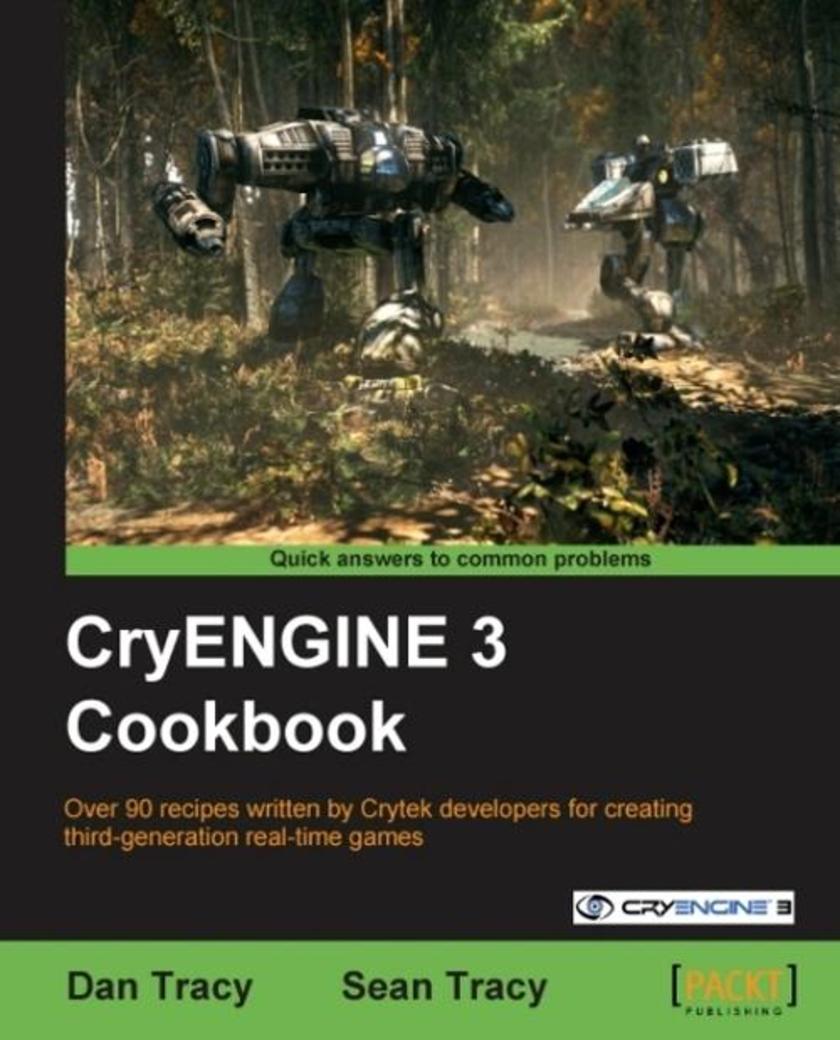
CryEngine 3 Cookbook
¥90.46
Written in a cookbook style, this book offers solutions using a recipe based approach. Each recipe contains step-by-step instructions followed by an analysis of what was done in each task and other useful information. The cookbook approach means you can dive into whatever recipes you want in no particular order. The CryENGINE3 Cookbook is written to be accessible to all developers currently using the CryENGINE3. It also explores the depth and power of the CryENGINE3 and is a useful guide to follow when becoming familiar with this award winning middle-ware game engine. This book is written with the casual and professional developer in mind. Fundamental knowledge of some Digital Content Creation Tools, like Photoshop and 3d Studio Max is required. The Software Development Kit version of the CryENGINE is used for all examples, so the reader should have a version of the development kit to follow the recipes contained in this book.

Flash Development for Android Cookbook
¥90.46
Written in cookbook style, this book offers solutions to all common Flash Android development problems through recipes. Each recipe contains step-by-step instructions followed by analysis of what was done in each task and other useful information. The book is designed so that you can read it chapter by chapter, or you can look at the list of recipes and refer to them in no particular order. This book contains recipes covering a variety of topics from the very simple to those that are more advanced. If you are a seasoned Flash developer, this book will get you quickly up to speed with what is possible with Android. For those who are new to Flash, welcome to the world of visually rich, rapid application development for mobile Android devices! If you have any interest in Flash development for Android, this book is for you.
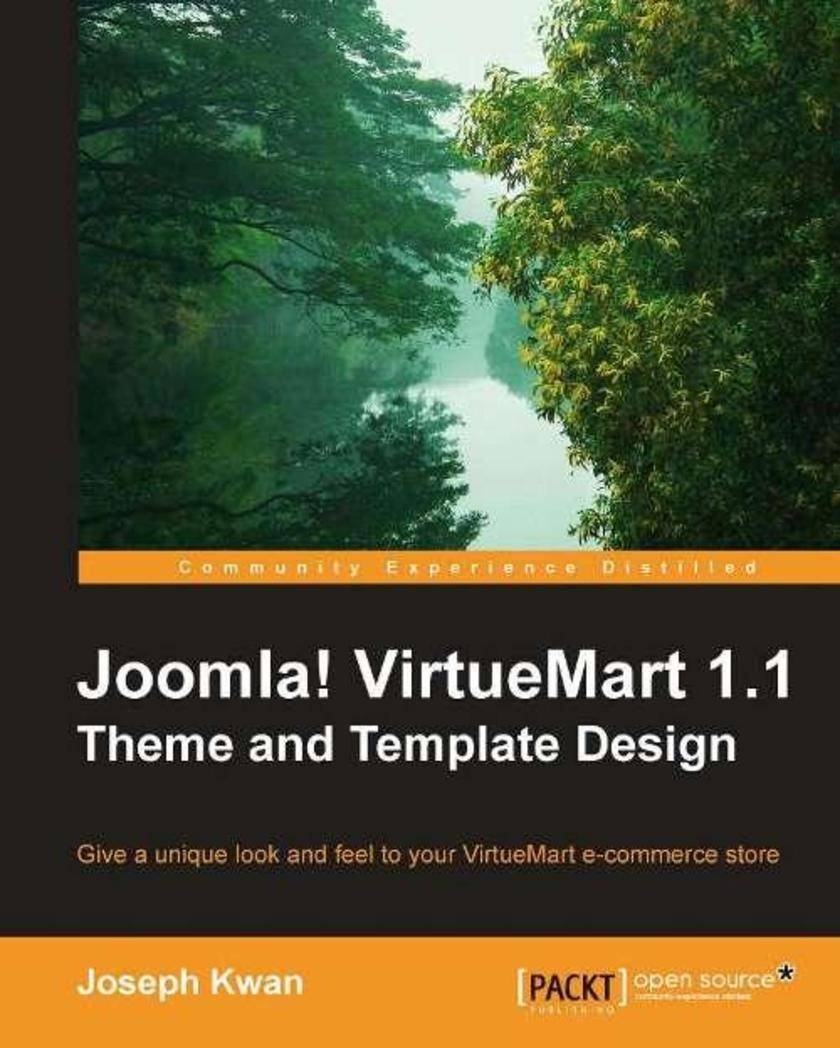
Joomla! Virtuemart 1.4 Theme and Template Design
¥80.65
This book is a step-by-step tutorial that will teach you to customize VirtueMart templates and themes. It includes all the essential screenshots and code with exhaustive explanations accompanied by exercises to ensure good pickup.You may be the owner of a Joomla! VirtueMart web store or a designer working with Joomla! VirtueMart. If you want to customize VirtueMart to unleash its enormous potential and elevate your store to the next level, this book is for you. You must have some experience with VirtueMart and understand its basic features. You also need to know HTML and should be comfortable taking up some challenges in PHP and JavaScript programming.
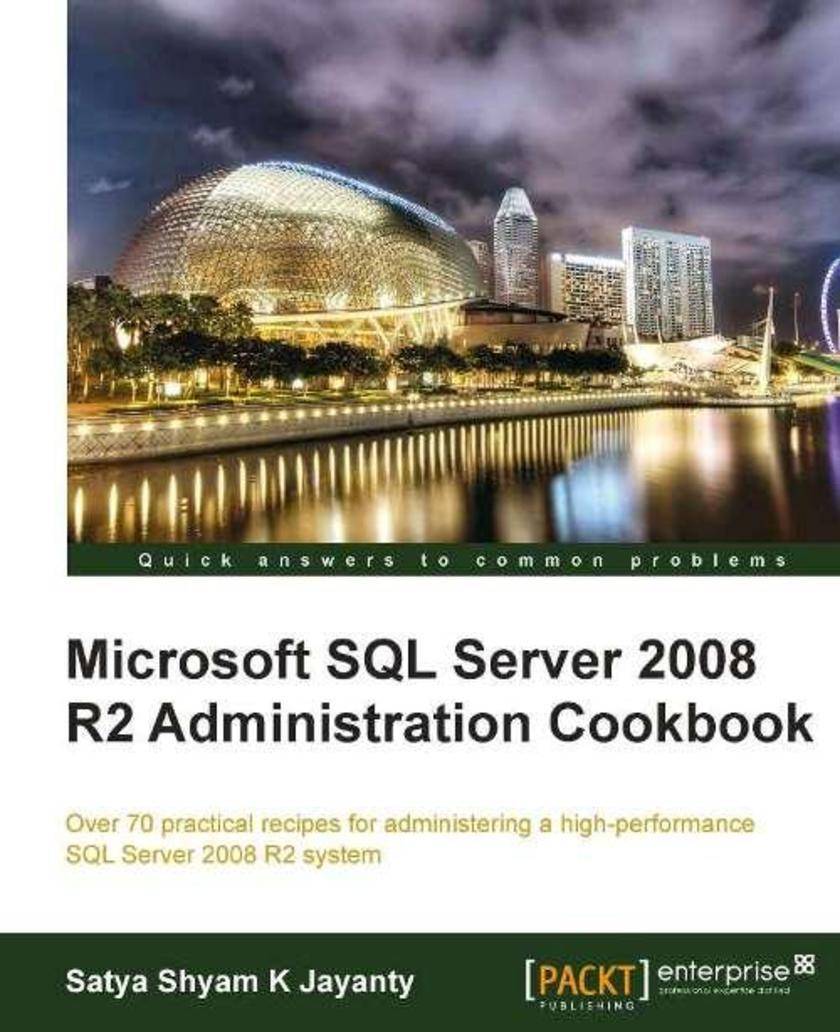
Microsoft SQL Server 2008 R2 Administration Cookbook
¥99.18
This book offers practical, task-based, and immediately usable recipes covering a wide range of advanced techniques for administering a high-performance SQL Server 2008 R2 system. In addition to its cookbook style, which ensures the solutions are presented in a clear step-by-step manner, its explanations go into great detail, which makes it good learning material for everyone who has experience in SQL Server and wants to improve. The book is designed in such a way that you can either read it chapter by chapter or refer to recipes that you want in no particular order. Although the book is focused on specific Microsoft SQL Server 2008 R2, most of the concepts and explanations are also applicable to SQL Server 2008. If you are an experienced database administrator and database architect who wants to design, administer, and manage a scalable and high-performance SQL Server 2008 R2 system, then this book is for you. The book assumes that you have a good understanding of database management systems, specifically experience in Microsoft SQL Server 2008 administration.

SAP BusinessObjects Dashboards 4.0 Cookbook
¥99.18
This guide to SAP BusinessObjects Dashboards 4.0 (formerly Xcelsius )is a cookbook packed full of practical recipes written in a clear, concise manner with annotated examples to empower readers to quickly accomplish specific dashboard tasks. If you are a developer with a good command and knowledge of creating dashboards, but are not yet an advanced Dashboard Design user, then this is the perfect book for you. You should have a good working knowledge of Microsoft Excel as well as knowledge of basic dashboard practices, though experience of Dashboard Design as a specific dashboard tool is not essential.
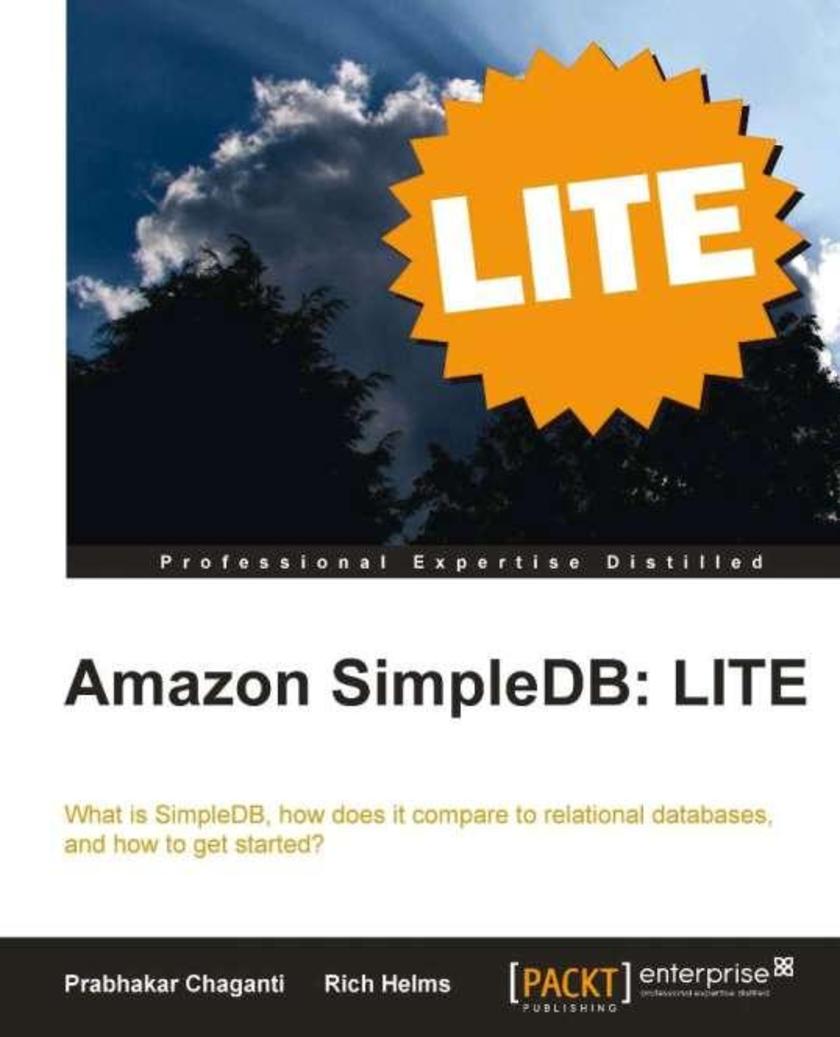
Amazon SimpleDB: LITE
¥35.96
If you are a developer wanting to get to grips with a primer into SimpleDB, then this book is for you. You do not need to know anything about SimpleDB to read and learn from this book, and no basic knowledge is strictly necessary.

Sage Beginners Guide
¥90.46
This is a beginner's guide with clear step-by-step instructions, explanations, and advice. Each concept is illustrated with a complete example that you can use as a starting point for your own work. If you are an engineer, scientist, mathematician, or student, this book is for you. To get the most from Sage by using the Python programming language, we'll give you the basics of the language to get you started. For this, it will be helpful if you have some experience with basic programming concepts.
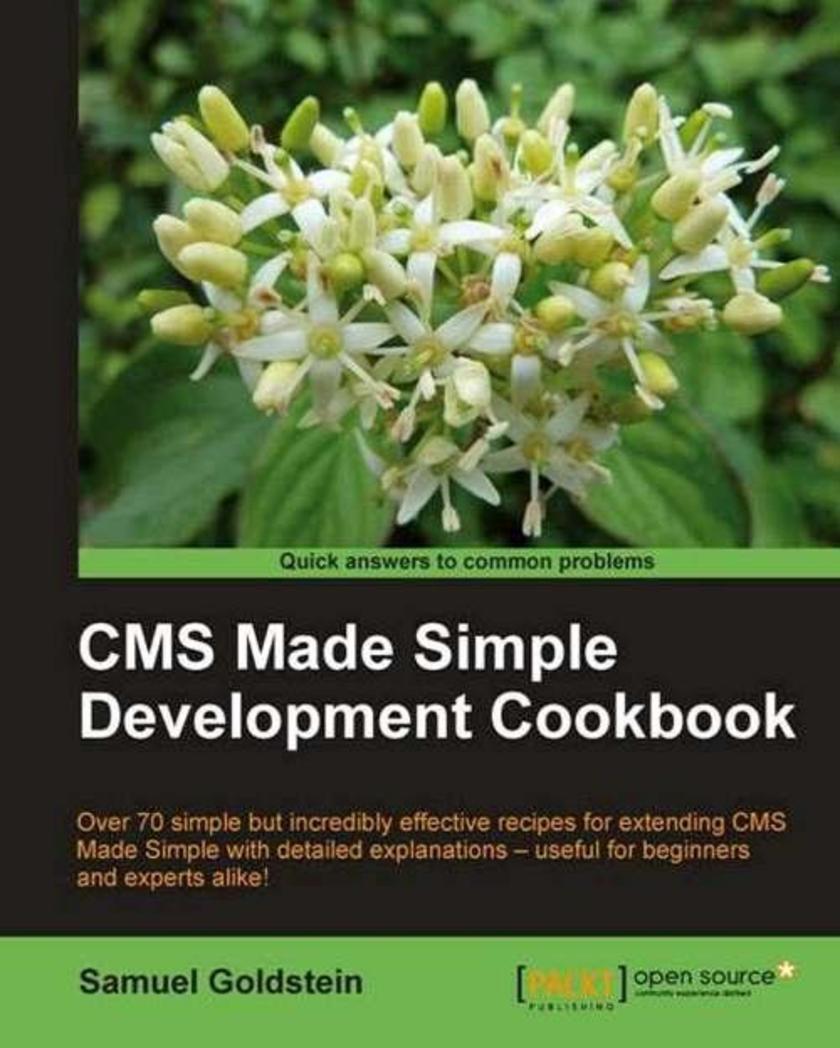
CMS Made Simple Development Cookbook
¥80.65
This is a cookbook, with practical recipes providing tips and tricks to the most common problems and scenarios faced with CMS Made Simple Development. If you are a CMS Made Simple user wanting to expand your skill set, or a programmer who wants to develop for CMS Made Simple, this book is for you. You will need working knowledge of PHP, HTML, and SQL. Some experience with CMS Made Simple is recommended.

Oracle Siebel CRM 8 Developer's Handbook
¥125.34
This book uses a real-life case study to provide easy-to-follow examples that are radically practical and can be easily adapted to similar situations in Siebel CRM implementation projects. The book ensures that you know what you are doing and why you are doing it by providing useful insight along with detailed practical instructions. It contains a multitude of explanatory tables, screenshots, and precise diagrams to illustrate the topics. When you have finished the book you will feel prepared to participate in Siebel CRM implementation projects. In addition you will be able to teach the "old dogs" some new tricks. This book is written for developers who want to develop their Siebel Tools skill set. While the book is intended for beginners, even experienced developers will benefit from the topics presented in this book. Preliminary exposure to or training on technical Siebel topics would be beneficial but is not mandatory before you start reading this book.
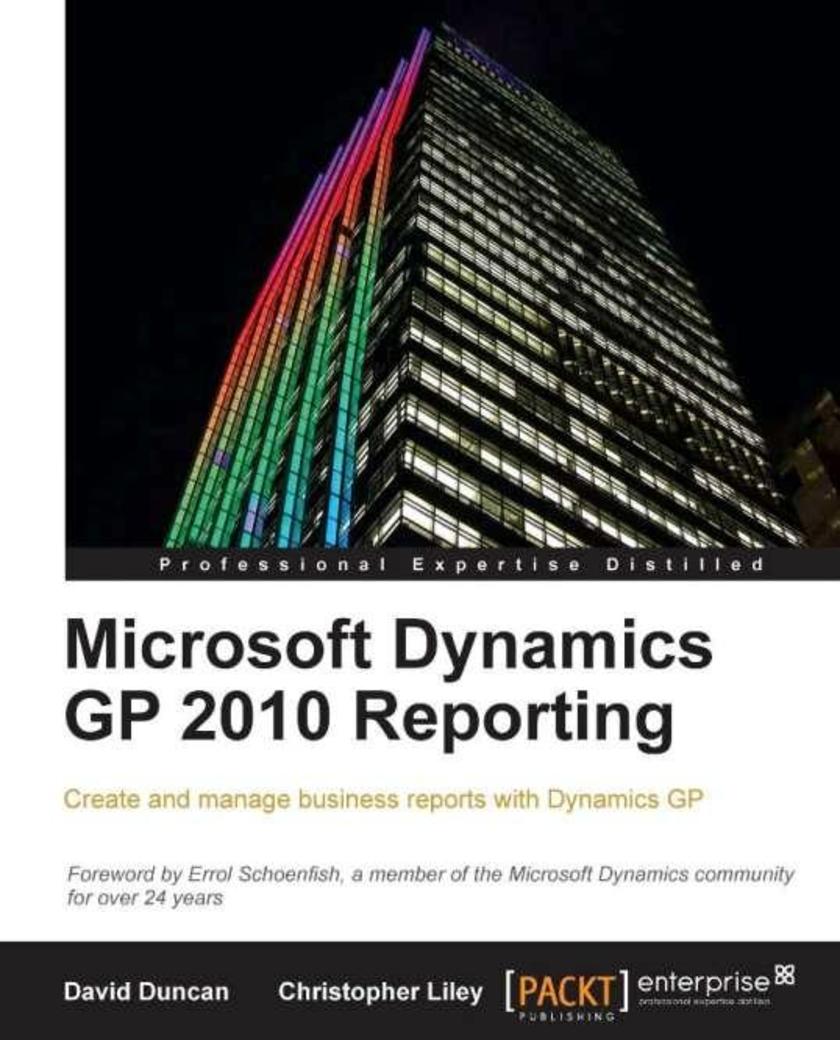
Microsoft Dynamics GP 2010 Reporting
¥107.90
Part tutorial, part reference guide, this book will show you how to create and manage reports as well as identify the most appropriate reporting tool for any reporting challenge. In addition, you will learn universal topics such as how to locate data for any given report. Although some of the reporting tools addressed in this book are exclusive to Dynamics GP 2010, many of the topics discussed also apply to older versions of GP. If you are a Microsoft Dynamics GP developer, consultant, or power user who wants to create and manage reports, then this book is for you. A working knowledge of Microsoft Dynamics GP is required. A basic understanding of business management systems and reporting applications such as Microsoft Excel and SQL Reporting Services is highly recommended.
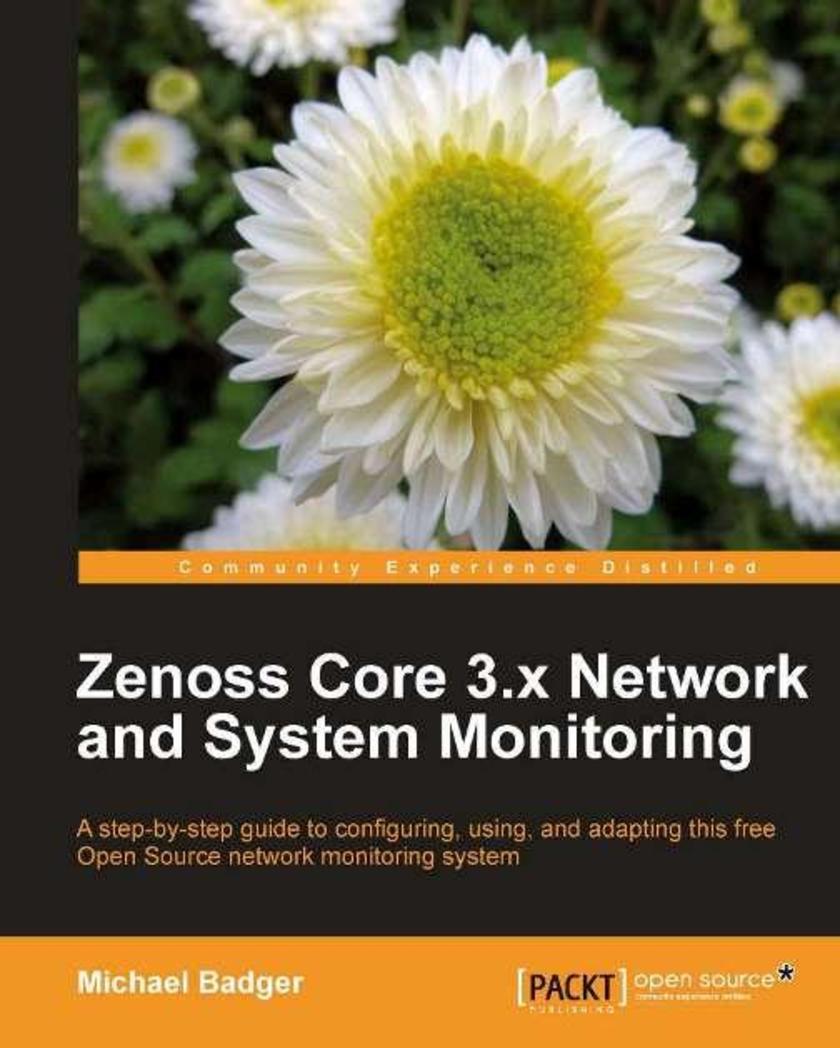
Zenoss Core 3.x Network and System Monitoring
¥90.46
The book starts by covering installation and configuration, before moving on to administration and dashboard usage. It contains step-by-step instructions for setting up and using a working, capable Zenoss system. This book is written primarily for network and systems administrators who are monitoring their IT assets with Zenoss Core or who plan to monitor them. In reality, this book will benefit anyone, regardless of job title, who recognizes the importance of proactively monitoring the servers, routers, computers, websites, and devices that connect companies to customers.
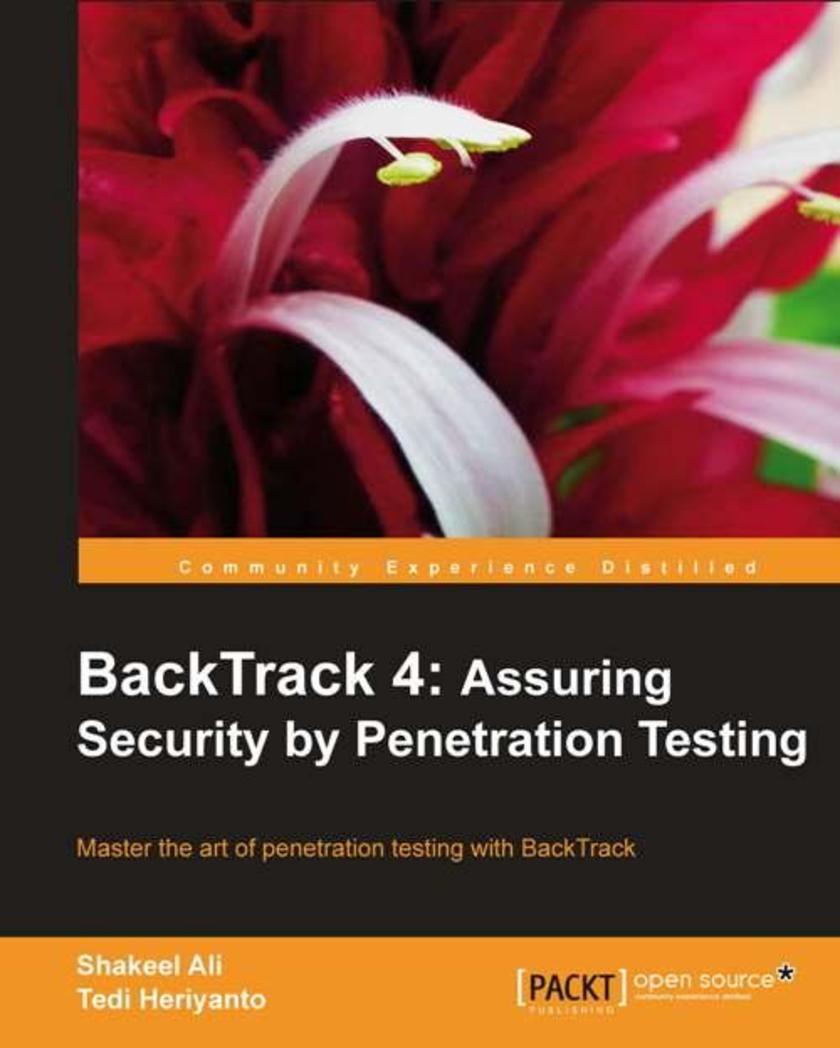
Backtrack 4: Assuring Security by Penetration Testing
¥90.46
Written as an interactive tutorial, this book covers the core of BackTrack with real-world examples and step-by-step instructions to provide professional guidelines and recommendations to you. The book is designed in a simple and intuitive manner, which allows you to explore the whole BackTrack testing process or study parts of it individually. If you are an IT security professional or network administrator who has a basic knowledge of Unix/Linux operating systems including awareness of information security factors, and you want to use BackTrack for penetration testing, then this book is for you.
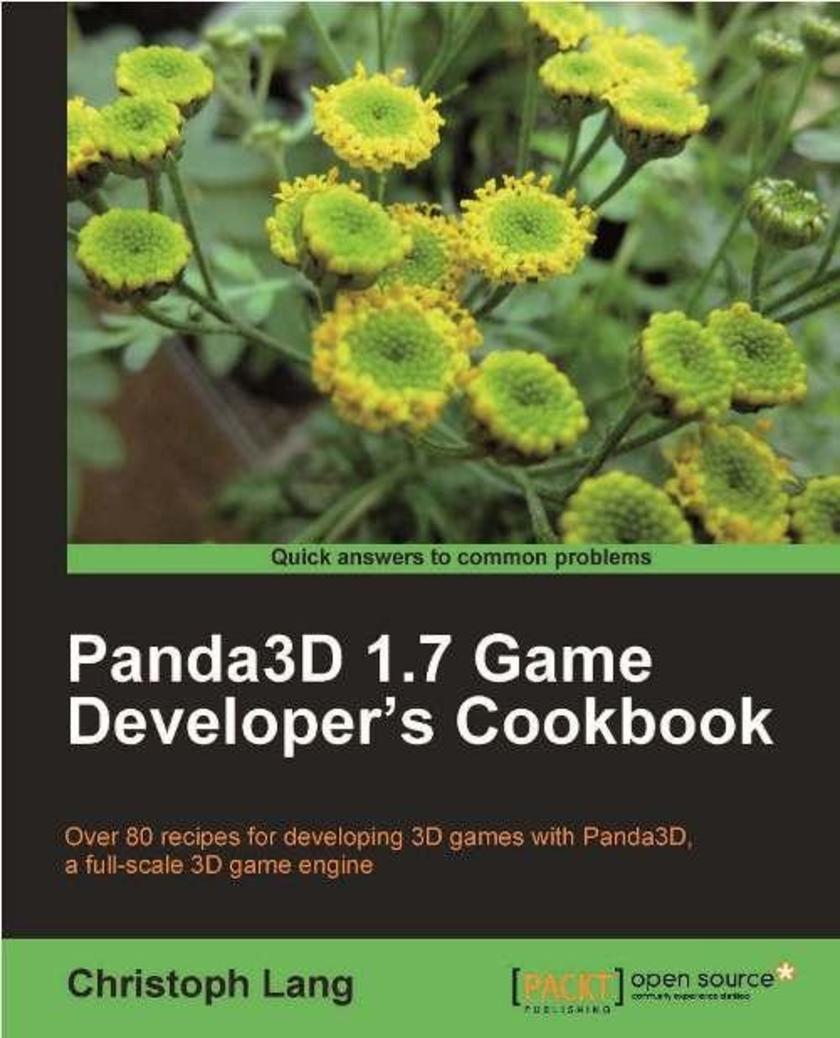
Panda3d 1.7 Game Developers Cookbook
¥80.65
This is a cookbook with over 80 recipes offering solutions to common game development problems with Panda3D with explained sample code and screenshots added in. If you are a developer with experience in Python, Panda3D, and optionally C++ and shading languages and you are looking for quick and easy to integrate solutions to common game development problems with Panda3D, this book is for you.

pfSense 2 Cookbook
¥80.65
This book is written in a cookbook style. Each chapter consists of recipes, each of which is composed of step-by-step instructions to complete a particular task. Each recipe also includes tips, alternatives, and references to other recipes or appropriate external sources. The book can be explored chapter by chapter or in no particular order. This book is intended for all levels of network administrators. If you are an advanced user of pfSense, then you can flip to a particular recipe and quickly accomplish the task at hand, while if you are new to pfSense, you can read chapter by chapter and learn all of the features of the system from the ground up.
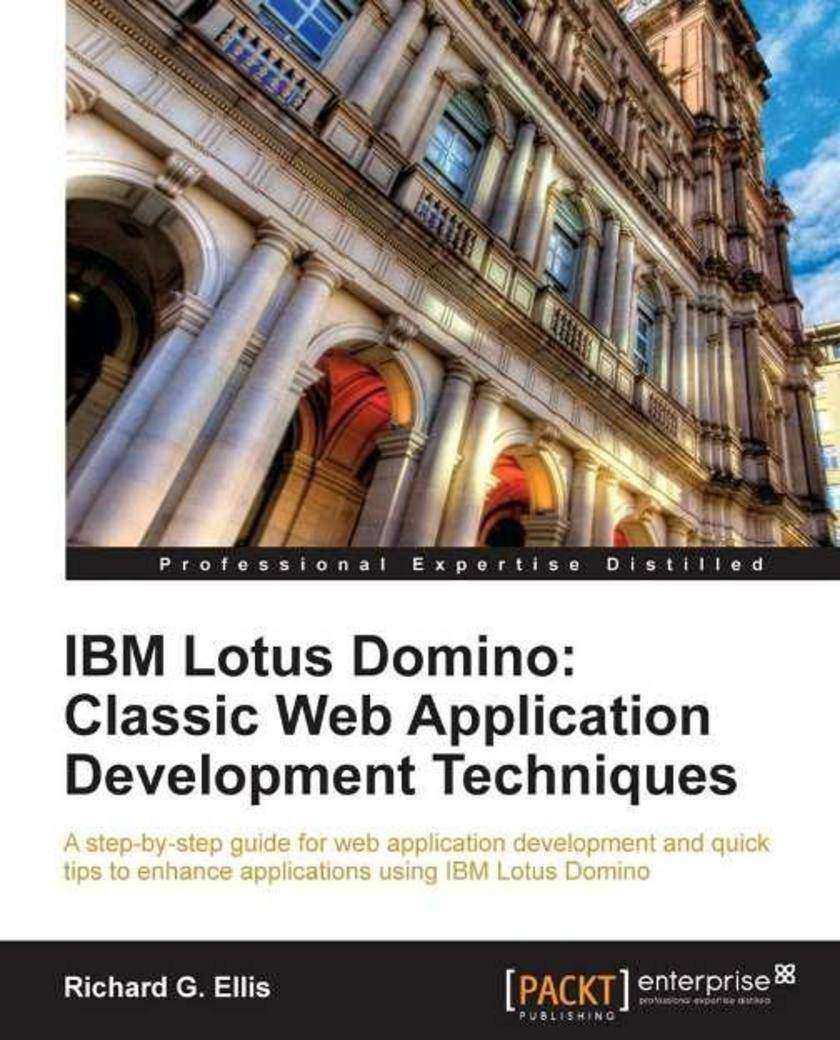
IBM Lotus Domino: Classic Web Application Development Techniques
¥107.90
Chapters present principles and techniques in an order that roughly mirrors the application development process itself, from gathering requirements through final testing. The focus is on understanding and enhancing applications using classic techniques, in circumstances where it is impractical to rewrite applications using XPages. Each chapter focuses upon a particular aspect of Domino Web applications and provides guidance, recommendations, illustrations, and sample code. This book is for novice to moderately experienced Domino developers who are new to the task of Web-enabling traditional Domino applications. Readers should be familiar with using Domino Designer to develop applications for the Lotus Notes client. It is also assumed that readers have, or can acquire, at least rudimentary knowledge of HTML, CSS, and JavaScript.




 购物车
购物车 个人中心
个人中心



